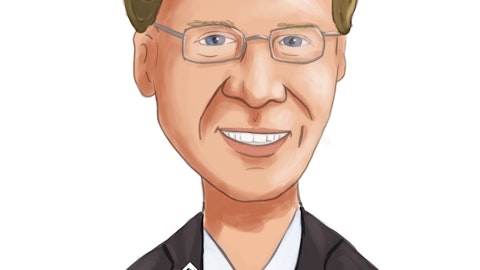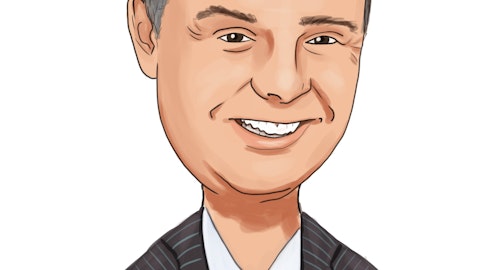So I think that’s impacting originations and certainly on the back end in terms of payoff and velocity in terms of projects being completed, and people immediately selling those projects, I think the market is still adjusting. So I would say, probably in real estate is where we’re seeing more of a market dynamic as opposed to any particular competitive lending matter. So hopefully, that gives you some clarity on your question.
Ben Gerlinger: Got you. And if I could sneak one more in, you guys have always been technology focused and leaning into that. Not to say bleeding edge, but your better technology than most banks of your size. So when you think the Inland deal gets you closer to $10 billion, but not there, if someone were to just walk up to your door and give you hit the bump, in terms of loans and deposits to get you over $10 billion on an organic basis? Are you ready to cross that threshold? Or is there more investment needed?
Alberto Paracchini: I think we’ve always run — ran the business in the context of thinking that at some point, we would get to the, this kind of $10 billion level and go beyond it. And we’ve been building the company over time to be able to accomplish that. I don’t know that I would tell you that we want to be a bank that’s hovering between $9.9 billion and $10.1 billion. But we are also not particularly that concerned about crossing that barrier. Certainly the example that you give if there was the perfect situation where you could cross it and cross it with some heft in terms of assets and liabilities coming with it. That would be terrific. But if it’s not, and we just simply cross it on the basis of organic growth, I think we’re certainly prepared to do that.
Operator: Our next question comes from a line of Terry McEvoy with Stephens Inc.
Terry McEvoy: HI. Good morning, everyone. First off, thanks for I guess slide 14 and all the CECL adoption data, particularly that table on the bottom left. And I guess my question is just to help us ask smarter questions in the future as it relates to CECL. Could you just talk about kind of who are you using for the economic assumptions? You’ve got that, your Midwest core business, but you’ve also had some national businesses. And maybe just from a high level, what are — what is your economic outlook with CECL now?
Tom Bell : We’re using Moody’s Analytics for our forecasting, Terry. And obviously, given the economic uncertainty out there right now. It’s appropriate to be concerned about slower growth and potential risk of recession. So, I mean, we’re just really using their forecasts based on the inputs from the economists there.
Terry McEvoy: Okay. And I appreciate the commentary on the NIM performance in the first half of this year. Based on your outlook for loans on a standalone basis, do you think NII continues to grow in the second half of the year? Or does their trajectory on NII mimic that of the margin?
Tom Bell : Well, I mean, we expect NII to grow as well because we do expect loan growth throughout the year. So that will be some offset to potentially lower rates in the second half.
Terry McEvoy: And then maybe one last question that sponsor finance portfolio which I don’t think was in the presentation but it’s kind of a caught $450 million. Could you just talk about how those borrowers perform when rates were rising? And how do you manage the risk in that portfolio should the economy soften here or as the economy softens here?
Alberto Paracchini: Mark, do you want to take that one?


